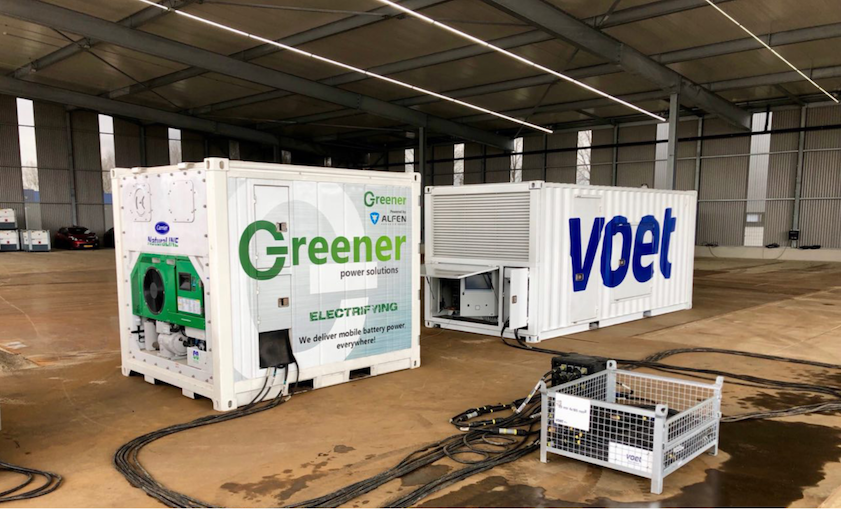Batteries are increasingly widely used in grid balancing, but there are many more applications where a battery can play an important role. With electric grids requiring periodic maintenance, batteries can stand in for the grid during downtime in order to reduce the impact on industry and households, writes Dieter Castelein, in an article which first appeared in PV Tech Power Vol.20.
Enjoy 12 months of exclusive analysis
- Regular insight and analysis of the industry’s biggest developments
- In-depth interviews with the industry’s leading figures
- Annual digital subscription to the PV Tech Power journal
- Discounts on Solar Media’s portfolio of events, in-person and virtual
We consume more and more electricity every day. The utilities and grid distribution operators must ensure industry and households are provided with the necessary connections. In order to do that, the grid must be expanded, and must be maintained periodically. This means that more often the power on the grid will be cut off while the necessary works are undertaken.
How is this currently done?
Today, when the grid is being maintained, the power is cut off at the transformer where the maintenance is done.
Nowadays, it is not possible to do any business or run a household without having power available; that is why also during this time of maintainance, a solution has to be found.
It’s all about efficiency
Traditionally, the energy demand for these periods has been supplied by diesel- fuelled generators. To absorb the peak demands of the grid and to prevent power loss, an oversized setup of generators is used to guarantee a consistent flow of energy.
Research from multiple festivals, where a lot of diesel generators are used, show that the average load was 12%, while the generators are the most efficient between 60% and 80% of their maximum engine power output. See Figure 1 for the energy data of a four-day festival and the average power output of the diesel generator.
The inefficient use of generators means that a great deal of diesel is being burned unnecessarily. These emissions contribute to climate change and poor air quality in cities.
Moreover, we see that more and more buildings have solar panels on their rooftops. A diesel generator cannot cope with current coming back on its output side. This means that when the load on the grid is smaller than what the solar panels in this area are producing, this energy has to be (quite literally) burnt away in big heaters. Which naturally is, again, a waste of energy and is not helping in our efforts to tackle climate change.
Also, these diesel generators produce quite some noise. This can be quite irritating to inhabitants when this solution is applied next to their bedroom.
Can batteries be a solutions during these grid take-overs?
Batteries can provide a solution to a couple of the challenges that are faced during these grid take-overs, but also have a challenge of their own. When applying a battery in this situation, you can only use as many kWhs as the batteries you bring to the site. When the battery has 0% charge left, it cannot fill itself anymore. With a generator on the other hand, you could just fill up the diesel again and start it back up.
That is why the best possible combination is a hybrid system. The benefits of the hybrid system are:
- A significant saving in fuel consumption;
- Reduction in CO2 emissions by using the battery as a “peak shaver” (see Figure 2);
- Low noise: during the night hours the battery can provide the complete supply of power;
- Energy reduction: energy generated by renewable sources delivered back to the grid during the day is stored in the battery and can power the grid at nighttime;
- Compact arrangement makes ideal use in urban areas;
- Reliable and clean power;
- The grid can be taken-over without the power going out.
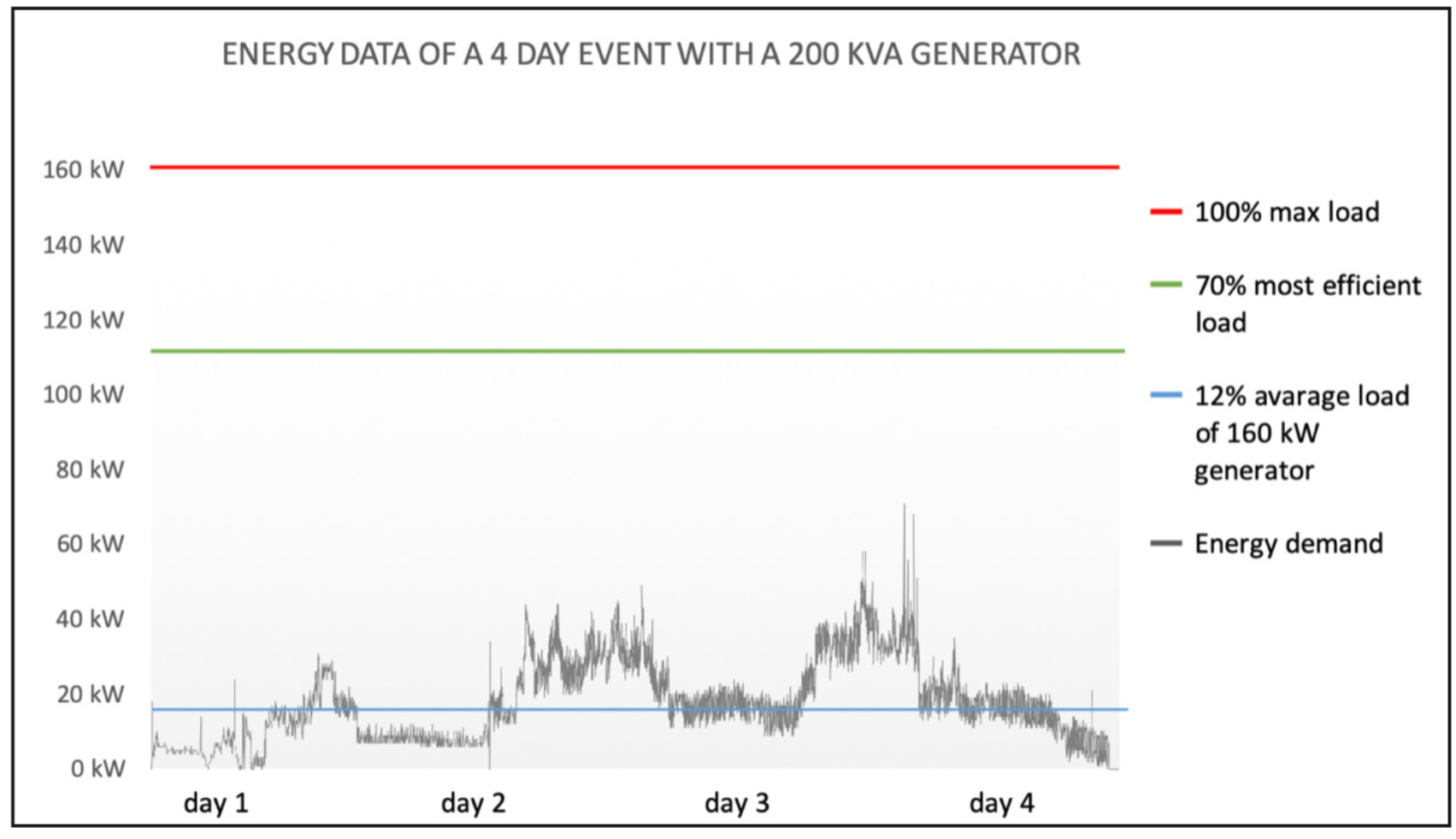
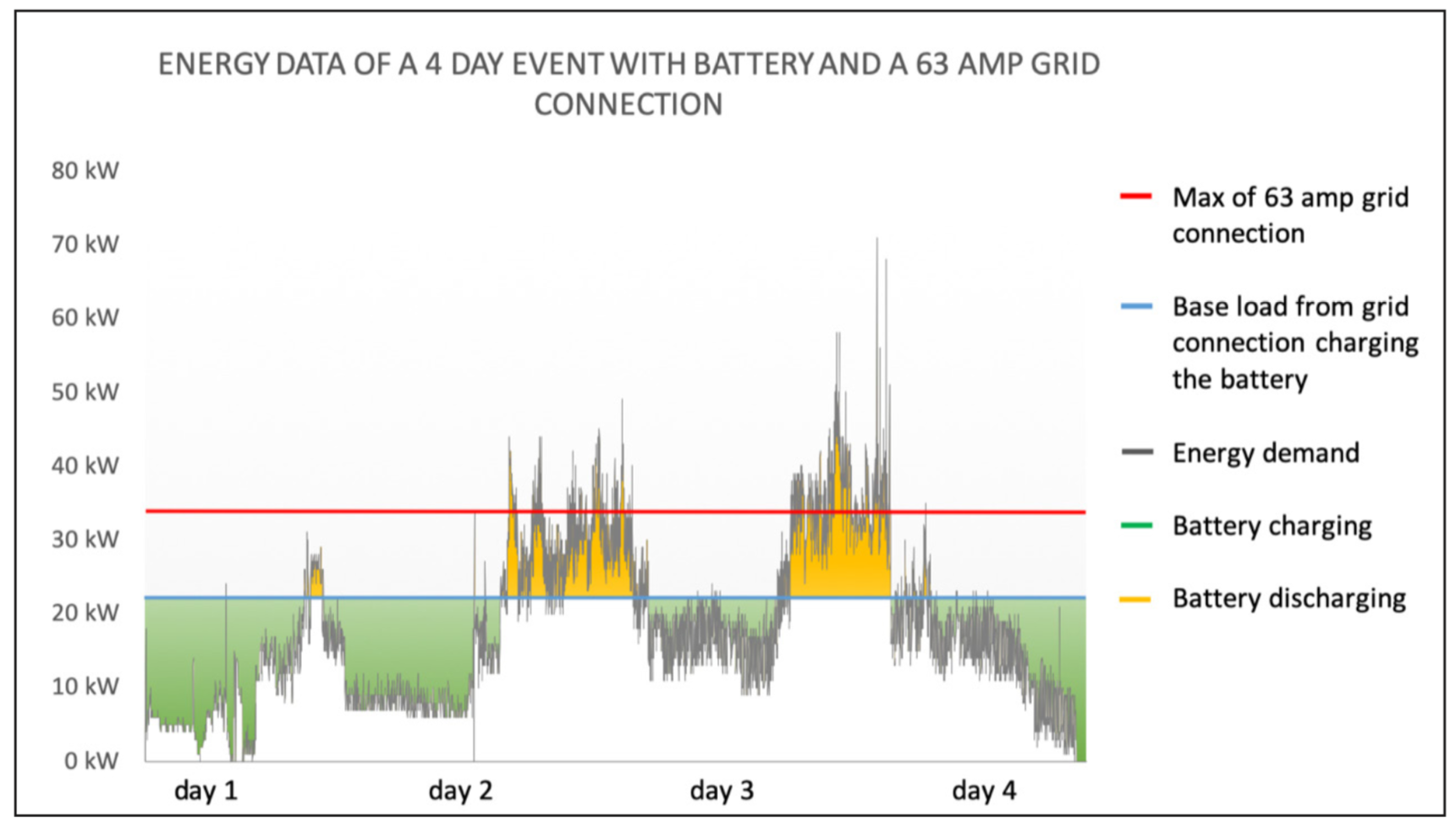
How would this new situation work?
Let us first define three situations when a grid take-over happens. These three scenario(s) will be explained in more detail as follows:
- Before grid overtake
- During grid overtake
- After grid overtake
Before grid overtake
Prior to maintenance, the grid requiring maintenance supplies power to the off-taker via a transformer, as shown in Figure 3 below.
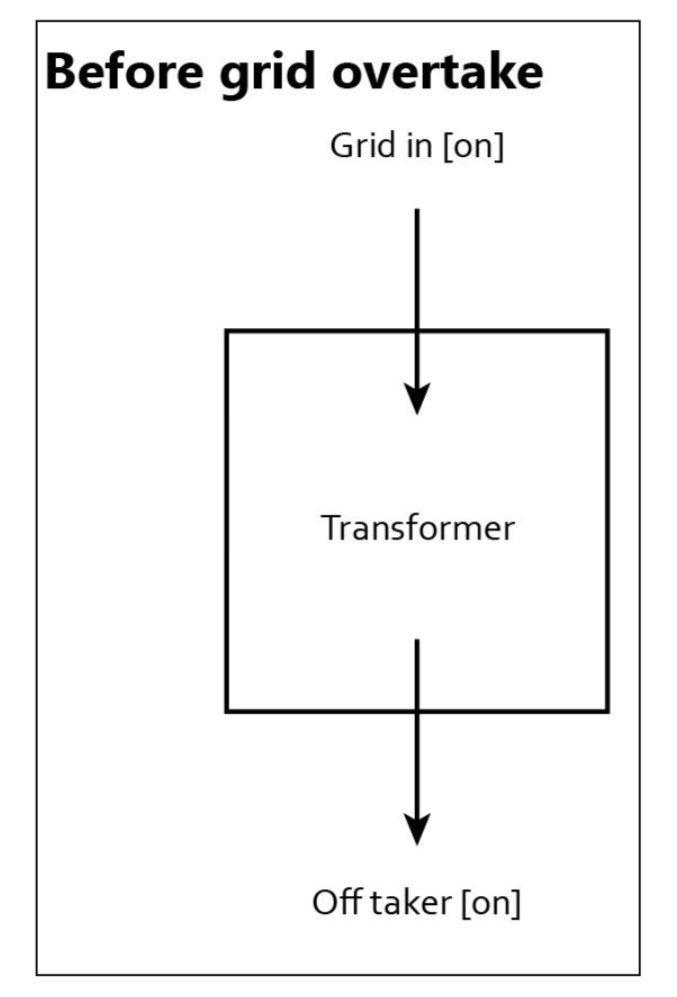
During grid overtake
When the battery is in place, and the maintenance can start, the battery will synchronise to the grid and start delivering power to the off-takers, alongside the power that is delivered by the transformer. See Figure 4.
The battery can now even take over all the power consumption that is happening on the off-taker’s side, so the electricians can safely disconnect the grid at the transformer side.
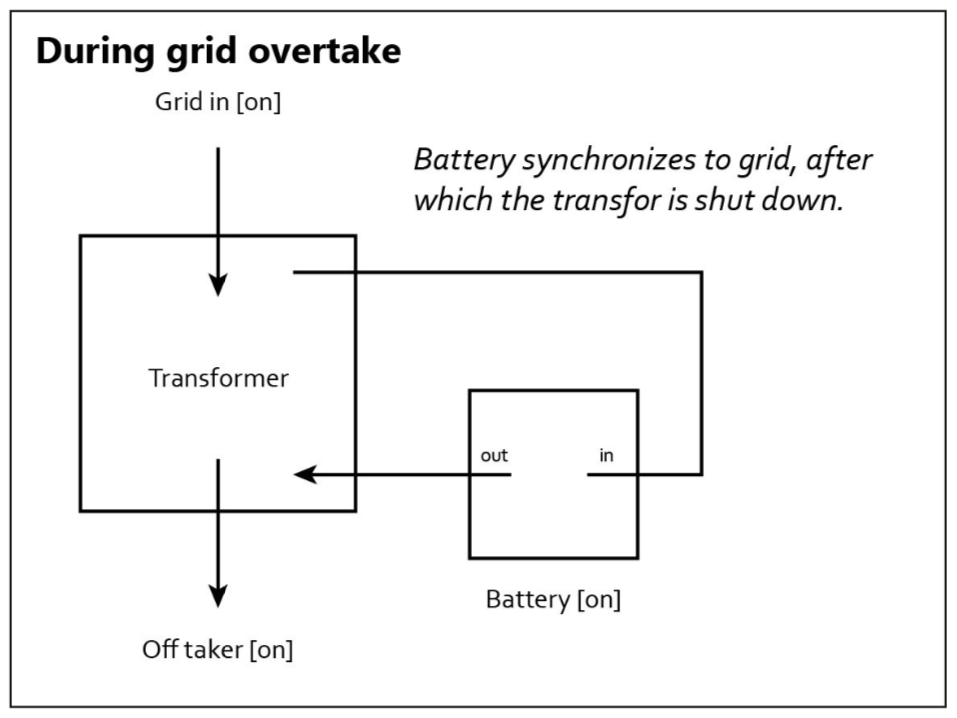
After grid overtake
When the power is disconnected at the transformer side, the battery is solely providing all the power that is needed on the off-taker side.
Whenever there is an overproduction of solar energy from rooftops, the battery will start charging, or when there is an underproduction, the battery will deliver the power that is required.
In order to guarantee that the power is always there, a diesel generator is attached to the input of the battery, so that it can charge back up on 70% of the diesel generator capacity in the shortest amount of time. The new situation looks as Figure 5.
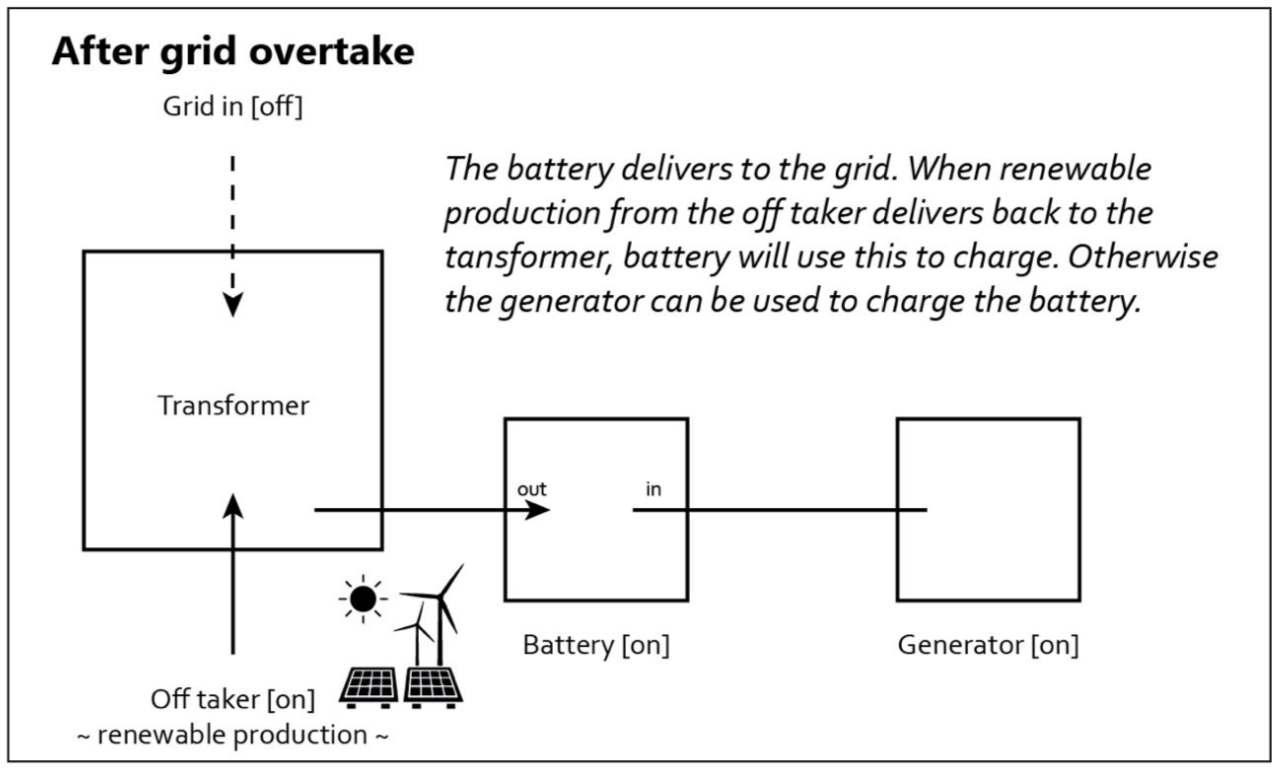
What is the upside?
Batteries provide the event with energy, and when the state of charge of the battery reaches a certain threshold, the generator will charge the battery at its most efficient load of 70%. This method can reduce emissions by up to 62% and reduce operating hours of generators up to 85%. Next, to the reduction of emissions, this method also reduces the running time significantly, so there is less noise from the generators.
